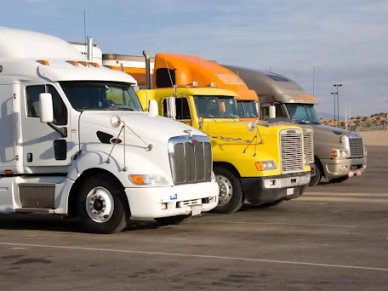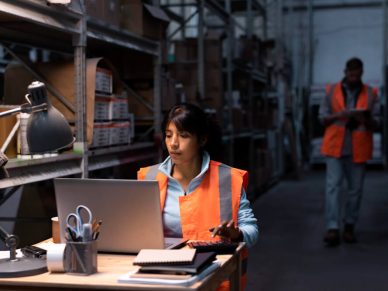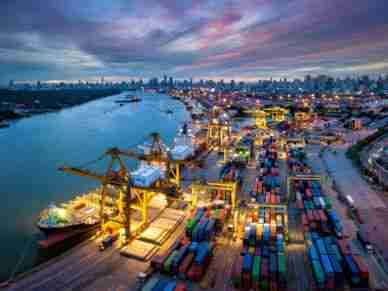
As businesses grapple with evolving consumer expectations and increasing security concerns, smart packaging emerges as a groundbreaking solution. This innovation leverages advanced technologies to enhance consumer engagement and fortify product security, offering a dual advantage that is transforming the packaging industry.
The Evolution of Smart Packaging
Smart packaging integrates technology into traditional packaging to provide critical information and improve product safety and user experiences. This evolution is driven by advancements in the Internet of Things (IoT), near field communication (NFC), radio frequency identification (RFID) and blockchain technology. These components work together to create a connected ecosystem where packaging is no longer a passive container but an active participant in the product lifecycle.
Another essential advancement in this area is automated packaging lines, which employ computers, programming and other technologies to handle nearly every part of the packaging process with minimal manual labor. This automation reduces the need for workers and speeds up the packaging process, eliminating repetitive, strenuous manual work.
Enhancing Consumer Engagement
Smart packaging revolutionizes how brands interact with consumers by transforming packaging into a dynamic engagement tool. Here are key ways it enhances consumer experiences.
Interactive Experiences
Smart packaging offers a new level of interaction between the product and the consumer. NFC and QR codes enable consumers to access detailed product information, instructional videos and promotional content by simply scanning the package with their smartphones. In addition to enriching the user experience, this engagement provides brands with valuable insights into consumer behavior and preferences.
Personalization
With data collected through smart packaging, brands can tailor their marketing strategies to individual consumers. Personalized offers, recommendations and loyalty rewards can be delivered directly through the packaging, fostering a deeper connection between the brand and the consumer. This level of personalization enhances brand loyalty and encourages repeat purchases.
Augmented Reality (AR)
AR-enabled packaging takes consumer engagement to another level by creating immersive experiences. Brands can use AR to provide virtual try-ons, interactive games or visual storytelling that captivates consumers and differentiates their products in a competitive market.
Strengthening Product Security
Beyond engagement, smart packaging is critical in securing products against counterfeiting, tampering and theft. These are some of the essential security features it offers.
Anti-Counterfeiting Measures
The global counterfeiting problem poses a significant threat to both businesses and consumers. Smart packaging combats this issue with embedded RFID tags and blockchain technology, which provide a verifiable and immutable record of the product’s journey from manufacturer to consumer. This method ensures the authenticity of the product and protects brand integrity.
Tamper Evident Features
Integrating tamper-evident technologies into packaging helps ensure product safety. These features can include seals that change color when broken or RFID sensors that alert manufacturers and consumers if the package has been opened or altered. Such measures are particularly crucial for pharmaceuticals, food and high-value goods, where tampering can have severe consequences.
Supply Chain Visibility
Smart packaging enhances supply chain transparency and traceability. RFID and GPS tracking allow businesses to monitor the location and condition of products in real time. This visibility helps prevent theft, reduces losses, and ensures products are stored and transported optimally. A blockchain can also provide an end-to-end ledger that records every transaction and movement for an extra layer of security and accountability.
Business Implications and Strategic Considerations
Implementing smart packaging involves unique challenges and strategic decisions. Businesses should consider the following factors to leverage this technology effectively.
Cost and Implementation
Integrating IoT, NFC, RFID and blockchain technologies requires significant investment in infrastructure and expertise. However, the long-term gains in consumer engagement, brand loyalty and product security can justify these initial costs. In fact, in 2022, the global smart packaging market was assessed at $36.04 billion. This figure is anticipated to expand to nearly $68.99 billion by 2032.
Data Management and Privacy
While the data generated by smart packaging can provide valuable insights, it also raises concerns about data management and consumer privacy. Businesses must ensure they comply with data protection regulations and implement robust cybersecurity measures to protect sensitive information. Transparent communication with consumers about data usage is essential to building trust and maintaining credibility.
Sustainability
As sustainability becomes a priority for consumers and regulators, businesses must consider the environmental impact of smart packaging. Integrating electronic components can complicate recycling processes, so developing eco-friendly solutions is vital. Biodegradable materials, recyclable components and energy-efficient technologies should be prioritized to align smart packaging with sustainability goals.
The Key to Navigating Modern Market Challenges
Smart packaging represents a significant leap forward in consumer engagement and product security. With ongoing technological advancements poised to unlock new possibilities, its future is promising, and businesses that embrace this innovation will be well-positioned to lead the market. Smart packaging will undoubtedly become an integral component of modern business strategies, driving growth and innovation in the years to come.
Jane Marsh works as the founder and editor-in-chief of Environment.co where she covers environmental news and sustainable living tips.













Leave a Reply